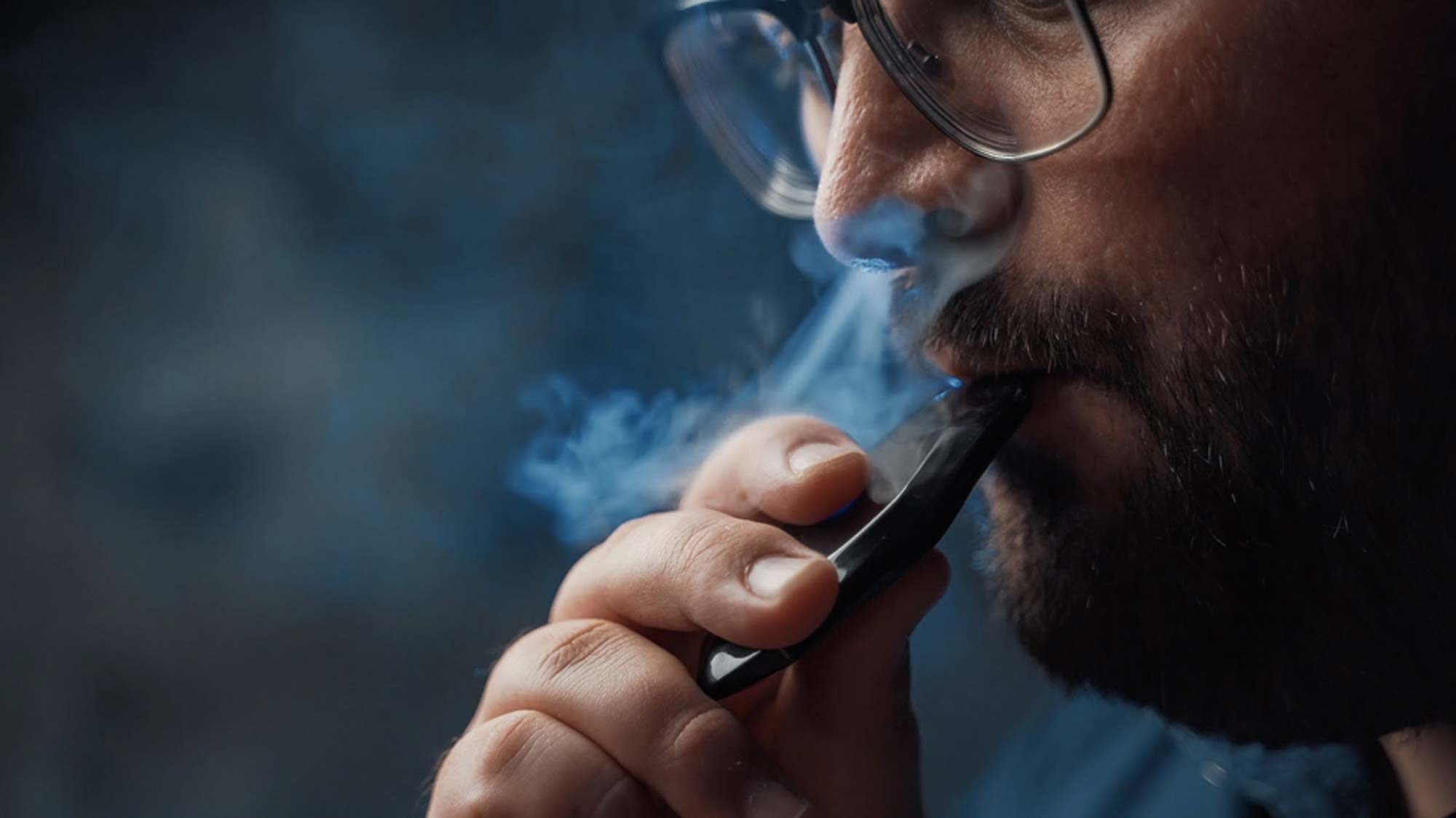Vaping is a relatively new trend that began in the 1960s, though the first idea for a e-cigarettes dates back to 1927 with Joseph Robinson. He patented the first prototype, but never commercialized it. It is unknown if the product functioned or if it just never took off in the commercial market.
In 1963, Herbert A. Gilbert popularized the idea of smokeless non-tobacco cigarettes. During this time, smoking was at its peak of popularity with 523 billion cigarettes smoked. Herbert himself was an avid smoker, reportedly smoking two packs a day by the Smithsonian.
His design is similar to today’s vape pen, though the technology was different. The Smokeless, as it was called, contained a liquid that was warmed by a battery-powered device. It created a vapor the user was meant to inhale. It was shaped like the modern vape pen; a thin cylindrical tube that contained all of the heating elements.
He even had flavoring: rum, mint, and cinnamon being the most popular.
His downfall came when he couldn’t find a company willing to commercialize his product.
In the 1990s, the Food and Drug Administration (FDA) allowed e-cigarettes to be introduced to the commercial market. The vaporizer had more traction overseas at this time: Bill Amato in Europe invented the cannabis vaporizer in Amsterdam.
It wasn’t until the early-2000s did the first modern e-cigarette come to fruition in the United States. It was created by the Chinese pharmacist Hon Lik in 2003. He was on a mission to quit smoking after his father died of lung cancer, but he never had any luck.
He devised the vaporizer to help him quit and wanted to commercialize it to tackle a global social problem. His product created a cleaner and safer way to inhale nicotine.
In 2004, Hon Lik introduced his product to the market through his employer, Golden Dragon Holdings. It was introduced to the United States in 2007.
In the past 13 years, vaping technology has exploded in popularity and changed drastically. The global e-cigarette/vaping market was valued at $14.05 billion in 2018 and is expected to grow to $29.39 billion through 2022.
Despite the boost in popularity and recent growth, the traditional e-cigarette is still available. They offer one-time-use products to allow users to vape nicotine as an alternative to smoking.
Vaping has evolved beyond nicotine. Users can now vape medical cannabis and can find alternative vape products, such as CCELL.
VAPING REGULATION
In 2016, the FDA extended vaping regulation control to the Center for Tobacco Products. The FDA regulates the manufacture, import, packaging, labeling, advertising, promotion, sale, and distribution of vaping products, called electronic nicotine delivery systems on the FDA website.
The FDA regulates e-liquids, certain batteries, glass or plastic containers of the e-liquid, cartridges, atomizers, tank systems, and more.
All vape products marketed for therapeutic purposes are regulated as well for research purposes.
As of January 2020, the FDA issued an enforcement policy on unauthorized flavored cartridge-based e-cigarette products, including fruit and mint flavors that appeal to kids.
TODAY’S VAPING MARKET: CCELLS
CCELL products do not have cotton wicks, thus eliminating the risk of burning the e-liquid or experiencing a burning taste. CCELL products lead the industry in its ability to heat high viscosity liquid while minimizing leakage and clogs. Because they are specifically designed for thicker e-liquids, they are the perfect conduits for medical marijuana distillates.
DC Alchemy went the extra mile and designed premium cartridges that are laboratory tested and quality assured. Their cartridges provide a ceramic heating element that reaches high temperatures to properly vaporizer thicker liquid.
DC Alchemy’s products minimize leaks and create smooth draws for the ultimate vaping experience. The secret is in the design. Leaking usually occurs when the e-liquid enters the airflow system. It can range from a drop or two to a majority of the contents. It is a common problem with most mods, though DC Alchemy cracked the code with its premium design.
DC Alchemy’s CCELL cartridges are optimized for seamless draws. The Ceramic core porosity ensures continuous fluid saturation while the increased cross-sectional area reduces the risk of overheating. When used for its intended purpose, the high viscosity e-liquid will quickly heat up to improve flow. Fewer leaks mean longer puffs and less tinkering to get your vape product to work.
Users will immediately notice the difference in flavor, quality of draws, and consistency. In addition to reduced leaks, the heating element also reduces the risk of clogs.
CCELL cartridges come in all shapes and sizes as well. DC Alchemy offers pens, the CCELL Silo and the CCELL Palm.
Check out their TH2 series, which is a symbol of its precise leak-proof nature. It offers a luxurious user experience. Adopting glass as housing material ensures better anti-corrosion properties and a higher flowability of oil. The screwed-in mouthpiece with silicon bottom secures it from leaking.
If you’re interested in their modern vaping products, check out their shop today.
